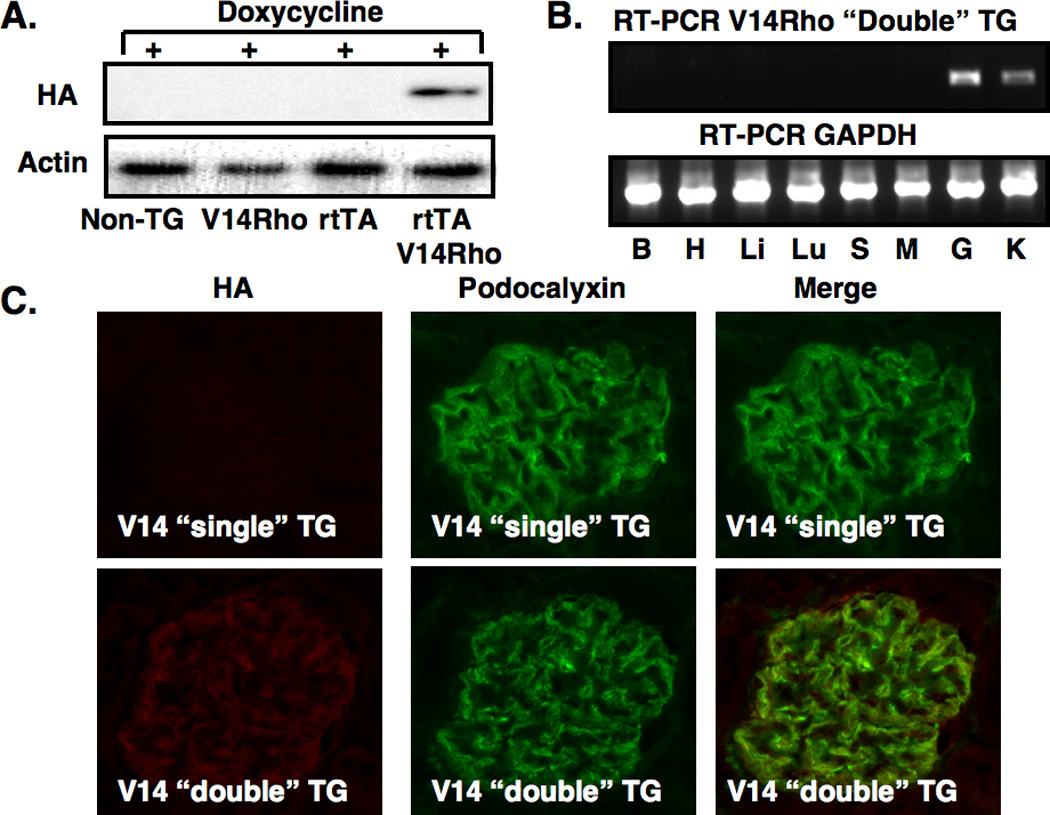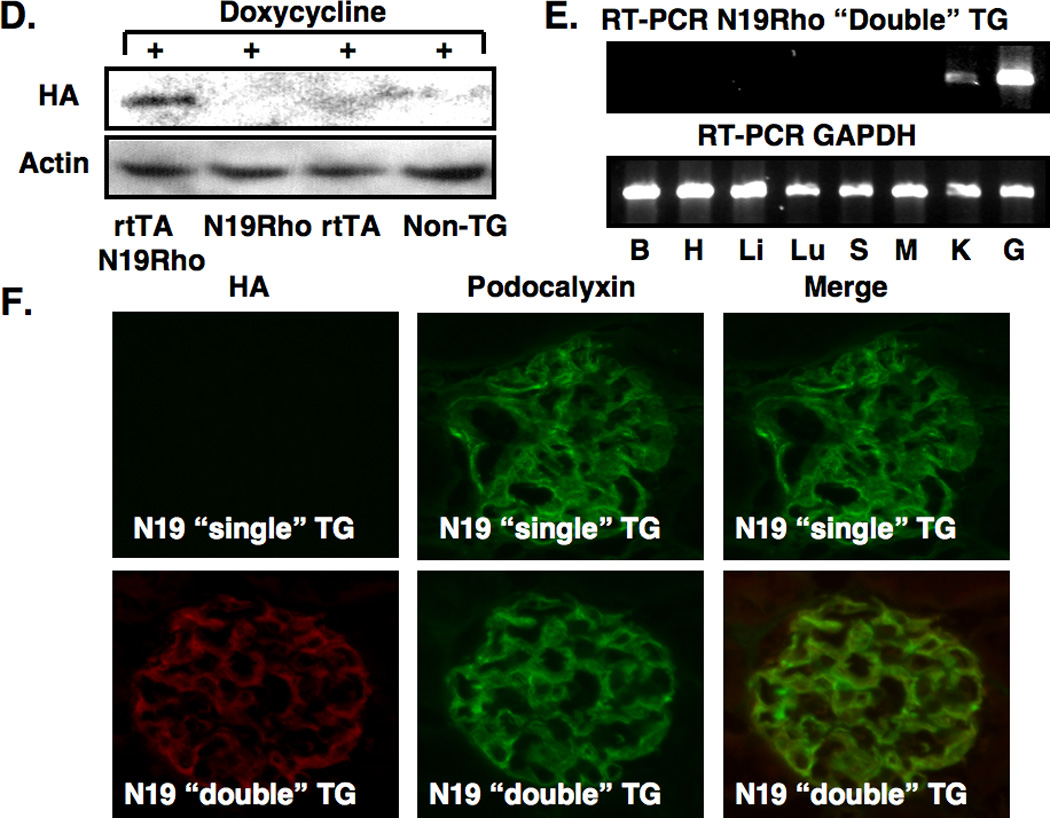Figure 1.


Creation of TG mice and induction of the transgene. In panels A and D, induction of the N19Rho and V14Rho transgenes, respectively, was investigated by immunoblotting for the HA epitope in non-TG mice, “single” TG mice and “double” TG mice after doxycycline treatment. Both transgenes were induced by doxycycline in “double” TG mice but not in control mice. Transgene expression was not detected by immunoblotting in the absence of doxycycline (data not shown). In panels B and E, tissue specific expression of the transgenes was investigated by RT-PCR in “double” TG mice after treatment with doxycycline using transgene specific primers. A RT-PCR product was detected in both kidney cortex and isolated glomerular preparations from N19Rho “double” TG mice and V14Rho “double” TG mice as indicated. No RT-PCR products were detected in other tissues from the “double” TG mice. The GAPDH control confirmed that the RT reaction was successful in the tissues examined. No RT-PCR products were obtained in any tissues from “double” TG mice in either the absence of doxycycline treatment or in the absence of an RT reaction (not shown). Similarly, no RT-PCR products were obtained in any tissues from doxycycline treated “single” TG or non-TG mice (not shown). B, H, Li, Lu S, M, K, G are brain, heart, liver, lung, spleen, muscle (skeletal), kidney cortex and glomeruli, respectively. In panels C and F, tissue sections were stained for expression of the HA tagged transgenes and the podocyte marker podocalyxin as indicated. As shown in the upper panels, podocalyxin, but not the HA epitope, was detected in “single” TG mice treated with doxycycline. In contrast, the lower panel shows that both the HA epitope and podocalyxin were detected in “double” TG mice treated with doxycycline. When the two images are merged the HA epitope and podocalyxin had a similar cellular distribution in the “double” TG mice.
